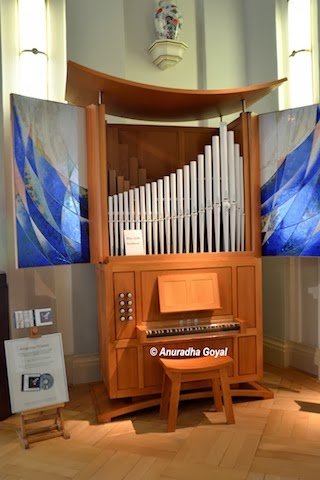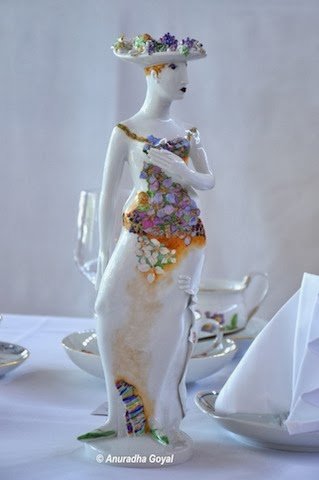The story behind Meissen Porcelain is like this. They say that new developments depend on crazy and irrational. This story will only re-enforce that. Augustus the Strong, the ruler of Saxony was crazy about collecting oriental porcelain. He would go to any extent to buy expensive pieces of Chinese porcelain. One of the legends says that he even exchanged some of his soldiers for porcelain.

Eventually, he decided to reverse engineer and make porcelain at home. A few miles away from Dresden in Meissen the research began in the early 18th CE. It took a few years to crack the know-how. But they learned the way to make their own porcelain. Their earliest porcelain was in red color. Some memento pieces are still sold in red porcelain.
Meissen Porcelain, Dresden – German Souvenir

Porcelain Making
The logo of the manufactory has remained the same – two cross swords. The color of the logo kept changing with the times, though. There are some historic designs that still continue to be popular like onion-shaped cups and saucers. The process of porcelain making is no longer proprietary. But the process of making colors is still maintained as a secret to date. A tour of the visitor center takes you through the history of porcelain artifacts here. A process of porcelain making in Europe through a video. Followed by a tour of demo areas where the various stages of porcelain making are shown.
It begins by carving off pieces. A favorite here is the quintessential onion-shaped cup and saucer, small flowers, and decorative faces. Some complex pieces that are a combination of many smaller pieces are also shown. This is followed by the demonstration of the painting by two different methods – overglazing and under glazing. Overglazing is done for floral patterns that are drawn by hand by skilled craftspersons. Different stages of the glazing are demonstrated at the back of these demo areas.

Tea, Coffee, Chocolate ceremony
The tea, Coffee, and Chocolate ceremony is a fascinating activity that they do in their cafeteria. Three different types of cups and saucers are kept on the table for every person. Along with different types of cakes and special cheesecakes of the region. The guide explains different shapes of cups like a tall cup for hot chocolate, a broad cup for tea, and a normal cup for coffee. The ceremony begins with drinks of chocolate followed by tea and finally coffee. Various shapes of the pots are also explained. The reason for those shaped like a saucer with a holder inbuilt for the teacup is so that it can be used while lying down.

There was a traditional set in black and golden that was priced at more than 1800 euros. As we enjoyed the precious porcelain and the exquisite varieties of drinks, the guide kept telling us stories of the evolution of Meissen Porcelain. At times she shared some old pictures of how they used porcelain in earlier days. At times she quizzed us what the people in the picture were having based on the shapes of the porcelain in their hands. You can also have multi-course meals at the same place in porcelain tableware.

Exclusive Porcelain Artifacts
Some exclusive pieces include a 3.5-meter high centerpiece of the dining table, many animals in white porcelain, and a musical organ. In fact, for a fee, they even play the musical organ on sale. This lets the audience understand the difference between the sounds of wooden, metal, and porcelain pipes sounds. Here and there, walls have patterns made from porcelain tiles. Some of them look like creative patterns and some look like paintings.
Curio Shop

On the ground floor, the visitor center has a curio shop and a huge jewelry shop that showcases wearable ornaments/artifacts. Most of us were scared to touch the pieces for they were both fragile and extremely expensive. There are broken pieces of porcelain filled in glass boxes creating an aesthetic form of them as well. There is a modern art center where new-age or contemporary artists’ creations of porcelain are showcased. Since we were a group of Indians they enthusiastically told us about the Indian artists who have exhibited their works here.
You need at least 2 hours for the tour of the facility properly.
Recommend you read the following travel blog posts on Germany Tourist Attractions.
Malgorzata Chodakowska – Sculpting Wine
Panometer Dresden – Recreating The Dresden Of 1756
Leipzig Germany – A City That Celebrates Music
Spinnerei Leipzig – From Cotton To Culture














Wow I don’t have any words…
this is really wonderful.
Thank you Sujit.
Thank You for writing about ART & CRAFT OF GERMANY